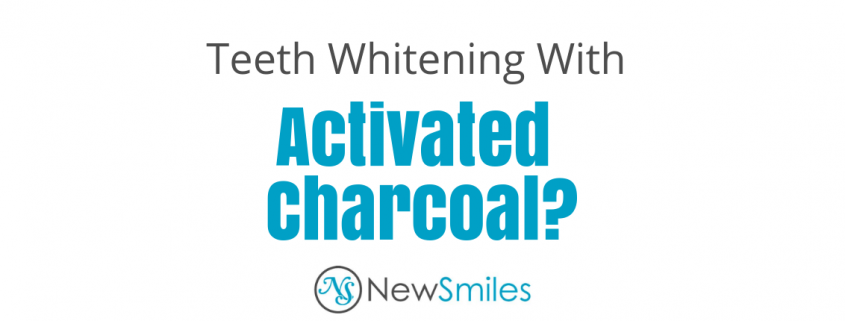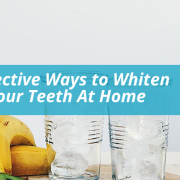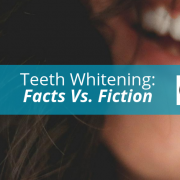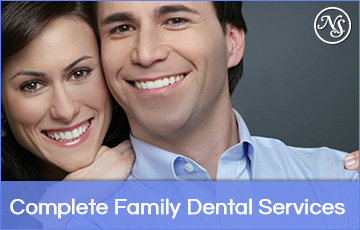Is Teeth Whitening With Activated Charcoal Safe & Effective?
Charcoal Teeth Whitening?
So let’s get this straight, people use charcoal for teeth whitening purposes?
Even to a dentist, this seems like an oxymoron, but it’s becoming pretty popular.
Why is charcoal – or to be completely accurate, activated charcoal – used for teeth whitening purposes?
With endless aisles of toothpaste, floss & mouthwash at our trusty neighborhood grocer – along with rows of teeth whitening gels, strips & trays – some of us think charcoal teeth whitening is the pathway to a whiter smile?
What Is Activated Charcoal & Why Is It Used for Teeth Whitening?
Now for some answers, courtesy of DentistryIQ.com.
Charcoal is made from coal, wood, or other substances. It becomes activated charcoal when high temperatures are combined with a gas or activating agent to expand its surface area.
This turns it into a powerhouse of porous material that sucks in impurities from the environment around it.(4)
This “sucking in” is a very rough way of describing what it does. Adsorption is different from absorption.
Basically, it means that the porous surface of activated charcoal attracts (mostly unwanted) material a bit like a magnet and holds it in its pores. This leaves the area around it clean.(5)
So, light the BBQ to get that good ‘ole charcoal ash going, slosh in some gasoline – after the fire is out & cooled of course, jeez – then mix it in a cup with some water & start brushing?
Or, read the directions IF you venture into the charcoal teeth whitening craze…but we’d prefer you call & talk with us first.
Does Activated Charcoal Teeth Whitening Work?
Maybe, maybe not…would steel wool work on a scab?
In short, the answer depends on how we determine effectiveness.
The long answer is more tests need to be done to determine whether teeth whitening with activated charcoal is the way to go for a whiter, brighter and more important, healthier smile.
According to the results of this literature review in the Sept 2017 edition of The Journal of the American Dental Association (JADA):
Dental clinicians should advise their patients to be cautious when using charcoal and charcoal-based dentifrices with unproven claims of efficacy and safety.
A “dentifrice” is a paste or powder for cleaning the teeth.
But there’s another way to get the best answer to all of these DIY teeth whitening questions, and that’s by asking your dentists & hygienists.
They have all of your health history, know your best (and worst) habits that affect your oral & overall health…and they’re probably on Facebook!
Is It Safe to Use Activated Charcoal for Teeth Whitening Purposes?
See the previous question.
Here’s what Tucson dentist, Dr. Howard M. Steinberg had to say about activated charcoal teeth whitening:
“I have not seen any good research studies or peer-reviewed articles about brushing with activated charcoal.”
“Whether or not charcoal is safe for teeth whitening comes down to long-term research proving its efficacy and safety.”
“Most dentists and dental professionals are concerned about the potential for dentin abrasion that activated charcoal presents.”
“If a patient wants to try a toothpaste containing charcoal, it would be best to know where the paste falls on the Relative Dentin Abrasion (RDA) Scale.”
“For example, Curaprox® White Is Black™, a toothpaste containing activated carbon, is quite low on the RDA scale (score of 30). Again, the long-term effects of brushing teeth with activated charcoal are unknown.”
In addition, this article mentions what a certain Dr. Susan Maples, a Michigan-based dentist and ortho speaker who authored “Blabber Mouth!: 77 Secrets Only Your Mouth Can Tell You to Live a Healthier, Happier, Sexier Life,” says on the subject.
The good doctor told FoxNews.com there isn’t enough evidence available to know whether the supplement is beneficial and that it may be dangerous.
“I worry about the long-term effects of a video like this,” Maples said. “Teeth are the only part of the ectoderm that does not replenish or heal itself— once it’s gone, it’s gone. You can color your hair, you can pierce your skin, damage your nail, shave an eyebrow— all of that comes back.”
Dr. Maples went on to say that the difference between using an approved dental tool, whether at home or at the dentist’s office, and a DIY teeth whitening remedy like activated charcoal, lies in their approaches.
So in other words, how it’s applied, how often, for how long, in what concentration…among other concerns.
When whitening at the office, your dentist already knows all of that. Whitening at home, with unapproved DIY fad methods, you don’t.
According to Dr. Maples, teeth whitening with activated charcoal may also leave tooth enamel susceptible to deterioration and erosion, which can lead to sensitivity and cavities.
“When you lose enamel, teeth get sensitive and darker in color because you’re close to the part of the tooth that has the depth of the color,” Maples said. “Since you can’t grow it back, the only thing you can do is cover it up with restoration.”
“My fear with the charcoal is people will do it periodically just to do it,” she said, “and over time, we’ll see too much erosion.”
Why Is DIY Teeth Whitening with Activated Charcoal So Popular?
Who knows, we’re all gullible, we trust YouTube more than common sense, we severely distrust conventional wisdom, fake news…whatever makes brushing our teeth with activated charcoal in order to whiten them so popular, doesn’t matter.
In case you haven’t heard, activated charcoal is among the latest DIY teeth whitening methods out there currently airing on YouTube.
Could we compare this charcoal teeth whitening craze with oil-pulling, rubber band straightening, bleachorexia, grillz, teeth tatoos, biting Olympic Gold Medals?
To be fair, this latest self-improvement beauty trend looked to peak after a produced named “Mama Natural” shared her experiences with using activated charcoal to whiten her teeth.
That was around August of 2016, according to our empirical observations. Her video showed how to use activated charcoal as a toothpaste. It went viral in just a few days with 1.5 million views.
So why rehash the activated charcoal for teeth whitening subject now?
Because in their most recent edition (Sep 2017), The Journal of the American Dental Association published the findings of a recent literature review to examine the efficacy and safety of charcoal and charcoal-based dentifrices.
Sales of charcoal dentifrices and powders have rapidly emerged into the Internet marketplace. –
JADA
The simplest answer as to why this DIY teeth whitening trend is so popular seems to be that it’s patients seek cheaper, easier ways to get the same (in most cases, worse) results at home.
Dental patients need to not only know all of the safe, effective teeth whitening options available to us, but more importantly the unsafe, potentially dangerous, or even not so effective ones.
We visit the dentist twice a year if we’re both lucky, so how can we learn what these options are?
As dentists can take oral & overall health to the streets so to speak, with newsletters, email announcements, social media posts, seminars, postcards…and more.
We promise to do this too by educating the surrounding communities and build awareness about activated charcoal tooth whitening…and more oral & overall health topics, controversial issues, new trends…and more.
As a society, we spend billions of dollars on self-help, health, beauty, & DIY products…let along $999 iPhones & $200 sneakers.
Why do we spend so much of our hard-earned money on these things?
Because it’s our right, because we like the status, because we can, because we believe we don’t have to explain our buying habits to anyone, because we believe that high-quality comes at a cost.
As consumers, we generally believe that we get what we pay for.
So why should teeth whitening be any different?
With the myriad of in-office & take-home teeth whitening products available at our dentist, from gels, to lights, to lasers, to take-home trays – why would we choose some inferior method that will have an immediate impact on our most visible personal feature, to save a few bucks?
It’s our face & teeth, isn’t that worth the extra (safer) expense?
How about dealing with a lifetime cost of increased gum recession & tooth enamel erosion as a result of trying to DIY your way to a whiter smile?
Maybe we don’t know about those options available at our dentist, maybe we don’t know if we’d be a good candidate, maybe we’re a little embarrassed to even ask about activated charcoal teeth whitening.
Choose to at the very least talk with your dentist & hygienist about activated charcoal teeth whitening before choosing any DIY method to shape up your smile!
Frisco TX ZOOM! Teeth Whitening Dentist: Manjula Alapati, D.D.S.
Take advantage of professional in-office teeth whitening!
Dr. Alapati is offering new patients significant savings here in Frisco and the surrounding Denton & Collin County areas.
We proudly provide ZOOM! teeth whitening, in addition to all phases of Cosmetic Dentistry services for Wayne and the surrounding North Jersey communities of Franklin Lakes, Montville, Kinnelon, Oakland, Pompton Lakes, Pompton Plains, Towaco, Butler, Paterson, Lincoln Park, Pequannock, Little Falls and Fairfield.
A bright, beautiful smile can make a big difference. The ZOOM! Whitening System makes it easier and faster than ever before.
The entire procedure takes just over one hour. The procedure begins with a preparation period followed by one hour of bleaching. A five-minute fluoride treatment completes the procedure (we recommend a cleaning prior to the actual Zoom! Whitening session).
Call Us Today at (469) 458-2035 to Schedule Your Appointment!
- SAVE $500 on Invisalign at our Frisco dental office!
- No Dental Insurance? SAVE BIG with One of Our Custom In-House Plans
- Referral BONUS — refer 4 patients & enter drawing to win $200 gift card!
- $59 Dental Exam for Patients Without Insurance
Editor’s Note: This post was originally published on Dental Patient News and has been republished here with permission. It has since been updated for accuracy & comprehensiveness.
REFERENCES: via DentistryIQ
4. Natural Standard. Activated Charcoal: Bottom Line Monograph. Nat Med J. 2013;5(8). http://www.naturalmedicinejournal.com/journal/2013-08/activated-charcoal-bottom-line-monograph. Accessed February 17, 2017.
5. Nowicki H, Nowicki G. The Basics of Activated Carbon Adsorption. Water Technology Solutions website. http://www.watertechonline.com/the-basics-of-activated-carbon-adsorption. Published February 1, 2016. Accessed February 17, 2017.







